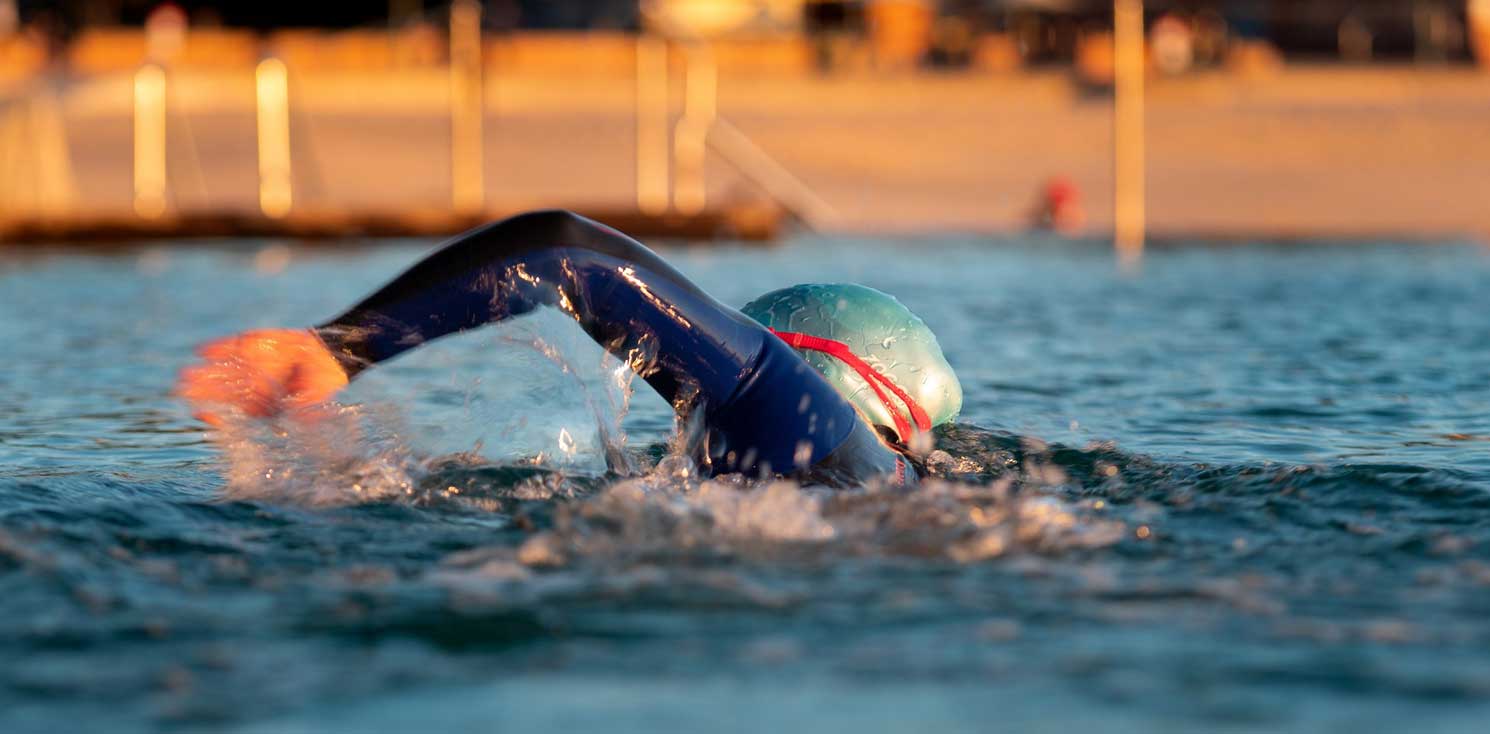Like any sport, the more you do it, the better you get at it. In swimming, you will get faster, more efficient, and more resilient to fatigue. For the latter point, many a veteran swimmer turns to marathon swimming to really test their resolve in the water.
Marathon Swimming: All You Need to Know
In this short blog post, we explore what marathon swimming consists of, how to train for it, and where to compete.
How Far Is A ‘Marathon’ Swim?
Unlike running, where a marathon is defined strictly as 26.2 miles, marathon swims vary dramatically. For classification of a marathon swim, the consensus is it must lie anywhere between five and fifty miles. That being said, there has been some incredible distance swims that almost defy the laws of humanity and our capabilities.
A fine example of this was completed by Ross Edgeley in 2018, when he swam around the United Kingdom. Yes, we will repeat that. A man swam around the United Kingdom. This took him 157 days, covering 1,791 miles, and suffering 37 jellyfish stings. A Guinness World Record that will take some beating.
But the good news is that, for mere mortals, marathon swimming doesn’t have to be quite this extreme!
Where Can You Complete a Marathon Swim?
Technically you could complete a marathon swim in a swimming pool if you did north of 150 lengths in a full-sized Olympic pool. This would hit the five-mile mark – anything beyond that can certainly be considered a marathon swim!

However, marathon swims generally take place in open water competitions around the world – in lakes, oceans, rivers and any other large body of water. Not only does this make sense from a logistical point, but it means the swim is kept interesting and there is a defined A to B, rather than a hamster on a wheel feeling in the pool.
You can find a comprehensive list of marathon swimming events across the world here.
How Do People Train for a Marathon Swim?
For situations like this, it really varies from individual to individual. Depending on your existing fitness levels, how prone you may be to injury or injuries caused by fatigue, and whether you have been consistently swimming for many weeks. You could train in the gym five days a week, but that doesn’t translate to swimming fitness.
Making sure you hit the pool at least three times a week, swimming at least two or three kilometres in each visit, is a good place to start to build up your endurance. Depending on the size of the swim you are targeting, the internet/swimming forums are a great place to determine where your baseline training should be in relation to your personal fitness level. Like anything in life, the more time you spend doing it, the better you will be and the more efficient you become.
Build yourself up gradually – add on another five lengths at the end of each workout. Before you know it, you will be doing double, or triple what you were before. And you will start to find that distance gets easier the more you do it. It is a game of small gains. And each small gain will add up to something huge.
We hope you found this advice helpful, and we wish you good luck if you try out a marathon swim in the future! Thanks for reading.

